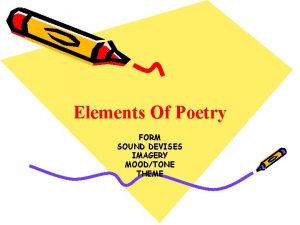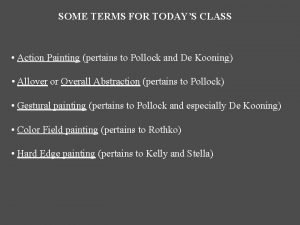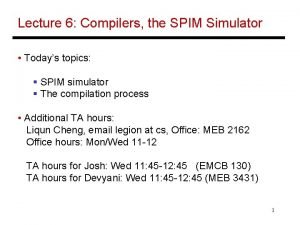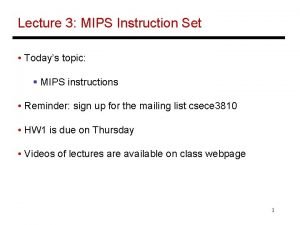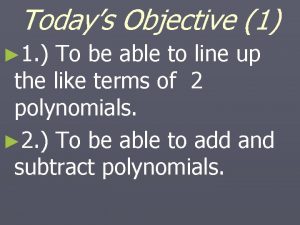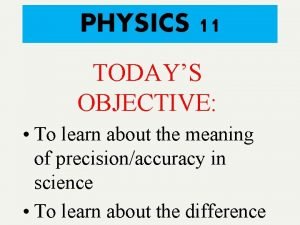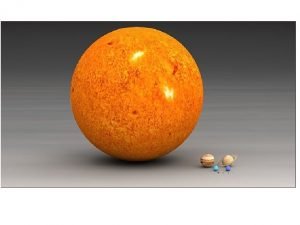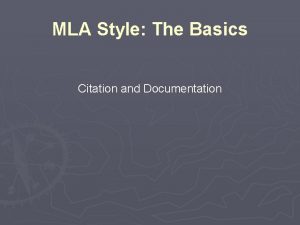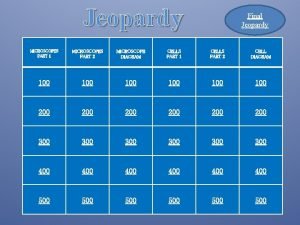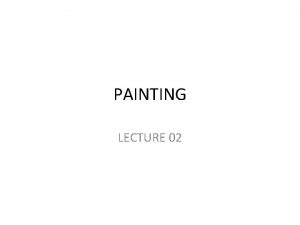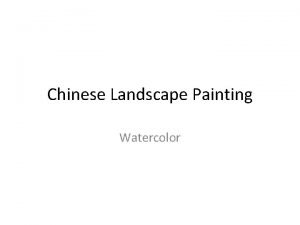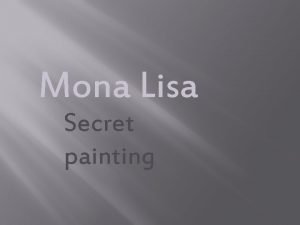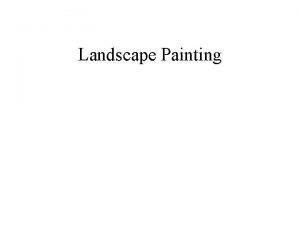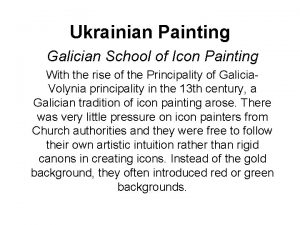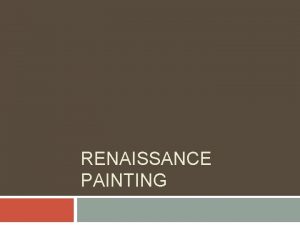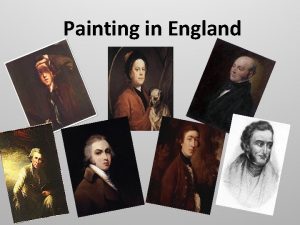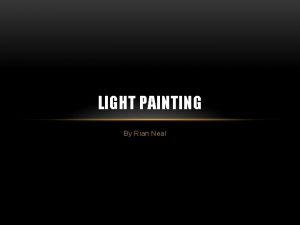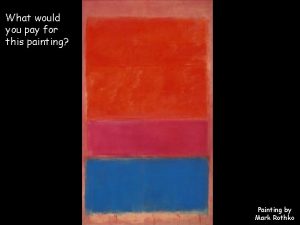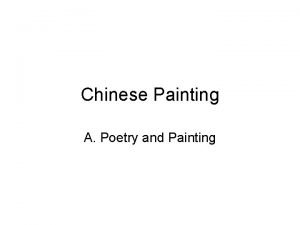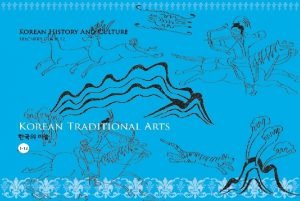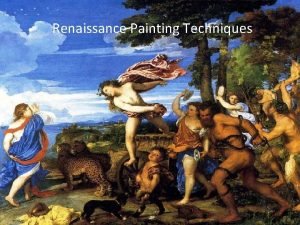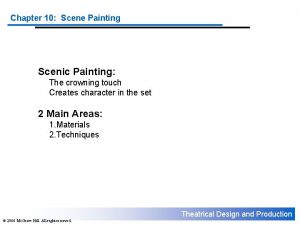SOME TERMS FOR TODAYS CLASS Action Painting pertains






































- Slides: 38

SOME TERMS FOR TODAY’S CLASS • Action Painting (pertains to Pollock and De Kooning) • Allover or Overall Abstraction (pertains to Pollock) • Gestural painting (pertains to Pollock and especially De Kooning) • Color Field painting (pertains to Rothko) • Hard Edge painting (pertains to Kelly and Stella)

1942 Group Photo of European Expatriate Artists in New York Front : Matta, Zadkine, Tanguy, Ernst, Chagall, and Léger Back : Breton, Mondrian, Masson, Ozenfant, Lipchitz, Tchelitchev, Seligmann, and Berman

Jackson Pollock, Autumn Rhythm: Number 30, 1950

Pollock, 1950 Relationship between Abstract Expressionism and early 20 thcentury abstract painting Kandinsky, 1913

Pollock, 1950 Relationship between Abstract Expressionism and Surrealism Masson, 1926

Size matters. . . Woman standing in front of Pollock’s Autumn Rhythm in the Metropolitan Museum of Art, New York

Autumn Rhythm Action Painting: Term coined by the critic Harold Rosenberg, who thought of the canvas as an arena in which violent and heroic actions were performed by artistic warriors Photograph of Pollock at work

Autumn Rhythm and details

Allover or Overall Abstraction A term applied to the works of Pollock, in which there are no distinct shapes. Rather, his open, interpenetrating lines form an “overall” field in which every area of the canvas is of equal value, and no single object stands out from the total “mass image. ”

Pollock: “I am nature. ” Pollock: “I try to stay away from any recognizable image; if it creeps in, I try to do away with it. . My concern is with the rhythms of nature”—that is, with capturing the underlying dynamism of nature, like “the way the ocean moves. ”

Note the textbook’s suggestive analogy: “From its position on a wall the work looms above us like a wave about to crash. ”

Willem De Kooning, Composition, 1955 Pollock, detail of Autumn Rhythm

Detail of a similar painting by De Kooning—note the “gestural” brushstrokes De Kooning, Composition

Two paintings by De Kooning Composition, 1955 Woman I, 1950 -52

Matisse, Woman with a Hat, 1905 De Kooning, Woman I, 1950 -52

So-called Venus of Willendorf, a prehistoric fertility object Woman I

1950 s ads for Camel cigarettes Woman I

Jayne Mansfield, 1956 Woman I

De Kooning’s woman reflects the age-old cultural ambivalence between reverence for and fear of the power of the feminine. Woman I

Two “Color Field” paintings by Rothko No. 61 (Rust and Blue), 1953 Orange and Yellow, 1956

Color Field painting (Abstract Expressionism) vs. Hard Edge painting (Minimal Art) Ellsworth Kelly, Red Blue Green, 1963 Rothko, 1957

ABSTRACT EXPRESSIONISM De Kooning, 1955 vs. MINIMAL ART Kelly, Red Blue Green, 1963 Here the contrasts between Abstract Expressionism and Minimal Art—between gestural painting and Hard Edge painting—are more obvious.

Detail of De Kooning Detail of Kelly

Mondrian, Composition with Red, Blue, and Yellow, 1930 Kelly, Red Blue Green, 1963 Relationship between Minimal Art and early 20 th-century abstract painting— not to Kandinsky but to Mondrian

Frank Stella, Empress of India (from Stella’s “Notched-V” series), 1965 Prof. Z. and Empress of India

Stella Frank Stella, Empress of India “A sword in the heart of Abstract Expressionism” Pollock

Frank Stella, Empress of India Stella: “My paintings are based on the fact that only what can be seen there is there. . What you see is what you see. ”

Empress of India Detail

Empress of India from the side

Empress of India The art critic Michael Fried noted a new feature of Stella’s “shaped canvases”: “The overall shape, ” he observed, “echoes the internal form. ” Thus, Stella closed the gap between what Fried called the “literal shape” of the painting and its “depicted shape, ” thereby achieving a new unity.

MINIMALIST SCULPTURE David Smith, 3 sculptures from the Cubi series Smith’s Cubi series consists of 28 stainless steel sculptures made between 1961 and 1965. Another piece from the Cubi series

Detail A new type of sculpture: not carved (like wood or stone), modeled (like clay), or cast (like bronze), but “assembled” from pieces of sheet metal welded together Sculpture from Cubi series

Donald Judd, Untitled, 1968 (Far more “minimalist” than Smith’s work) Sculpture from Cubi series

Donald Judd, Untitled, 1968 Frank Stella, Empress of India, 1965

Untitled, 1968 Donald Judd Note: Works like the on the right are known as “stacks. ” Untitled, 1969

Judd’s “stacks” are always composed of single units – usually ten of them – with identical dimensions, placed one above another on the wall. The intervening spaces have the same dimensions. Therefore, solids and voids are identical, and there is a unity somewhat similar to that of Stella’s shaped canvases. In addition, the distance between the floor and the lowermost unit is the same and, ideally, so is the distance between the topmost unit and the ceiling (though this is not always possible). Untitled, 1969

A good example of a Judd “stack” not far from where I live: in the Modern Art Museum of Fort Worth, Texas

MZ and a similar “stack” by Judd
 The path left by a moving point
The path left by a moving point Imagery in poetry pertains to _____________. *
Imagery in poetry pertains to _____________. * Medical assistant telephone techniques
Medical assistant telephone techniques Today's classes
Today's classes Todays class
Todays class Todays class com
Todays class com Frank stella
Frank stella Polynomial classification
Polynomial classification Math combining like terms
Math combining like terms They say sometimes you win some
They say sometimes you win some God when you choose to leave mountains unmovable
God when you choose to leave mountains unmovable Ice cream countable and uncountable nouns
Ice cream countable and uncountable nouns Contact force
Contact force Some say the world will end in fire some say in ice
Some say the world will end in fire some say in ice Some say the world will end in fire some say in ice
Some say the world will end in fire some say in ice Some may trust in horses
Some may trust in horses Todays generations
Todays generations Multiple choice comma quiz
Multiple choice comma quiz Todays worldld
Todays worldld Whats thermal energy
Whats thermal energy Todays globl
Todays globl Todays wordlw
Todays wordlw Chapter 13 marketing in today's world answer key
Chapter 13 marketing in today's world answer key Todays plan
Todays plan Todays sabbath lesson
Todays sabbath lesson Welcome for sabbath school
Welcome for sabbath school Walsall rugby
Walsall rugby Todays health
Todays health Todays objective
Todays objective No thats not it
No thats not it Today's objective
Today's objective Todays whether
Todays whether Todays vision
Todays vision Todays objective
Todays objective Planetarypositionstoday
Planetarypositionstoday Mla first page example
Mla first page example Todays final jeopardy question
Todays final jeopardy question Handcuffing positions
Handcuffing positions Todays weather hull
Todays weather hull

